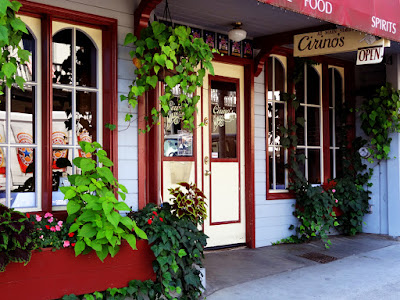I was putting together a mixed, six-pack of craft beer the
other day and saw a bottle of “Two Hearted Ale.” I thought, ah ha, a literary
brew and saw that the beer was indeed from a brewery in Michigan. Of course, I
added it to my six–pack. The name and label, showing a flashing trout, were
clearly referencing Hemingway’s short-story “Big Two-Hearted River.”
The story is outwardly about Nick Adams hiking along and
fishing in the river, located in Upper-Michigan. The story has underlying,
subtle implications about war and Hemingway’s experiences in WWI. It is
outwardly a simple, but actually, very complex story. I had first read the
story, I think, in the book The Nick
Adams Stories, which was published by Scribner’s in 1972 after Hemingway’s 1961
death. I liked the story and have re-read it a number of times since.
The background and geographical aspects are interesting.
Although the river of the story was in Upper-Michigan, the brewery (Bells
Brewery, Comstock, Michigan - below) is actually located far away from the Michigan Peninsula, just east of Kalamazoo, in southern,
Lower-Michigan. So, the Michigan link to Hemingway’s story is there, even if a
bit remote from the setting of the story.
The story has its roots in a fishing trip Hemingway took
with two friends in Upper-Michigan. This was after WWI and Hemingway was
still recovering from injuries he suffered from a mortar explosion near the
front lines in Italy. Hemingway and his
friends were actually fishing the Fox River (below), but the nearby (above) Two-Hearted River’s
name better fit the themes Hemingway was developing in the story. Early drafts
had Nick Adams fishing with friends, but subsequent versions ended with Adams
hiking the river and camping on his own.
This story originally appeared in In Our Time, which was Hemingway’s first book to be published. The
book was printed in 1924 by Three Mountains Press of Paris and was issued in a
numbered, limited edition of only 170 copies. Copies of this edition are
available on the collectors market, commanding hefty prices of around $50,000.
Other editions of In
Our Time quickly appeared. Boni & Liveright published a U.S. edition in
1925; a UK edition was published by Cape in 1926; the first edition published
by Hemingway’s long-time publisher, Scribners, appeared in 1930. All of these
editions are quite collectible.
Amazing what a simple trip to the liquor store can trigger.





































